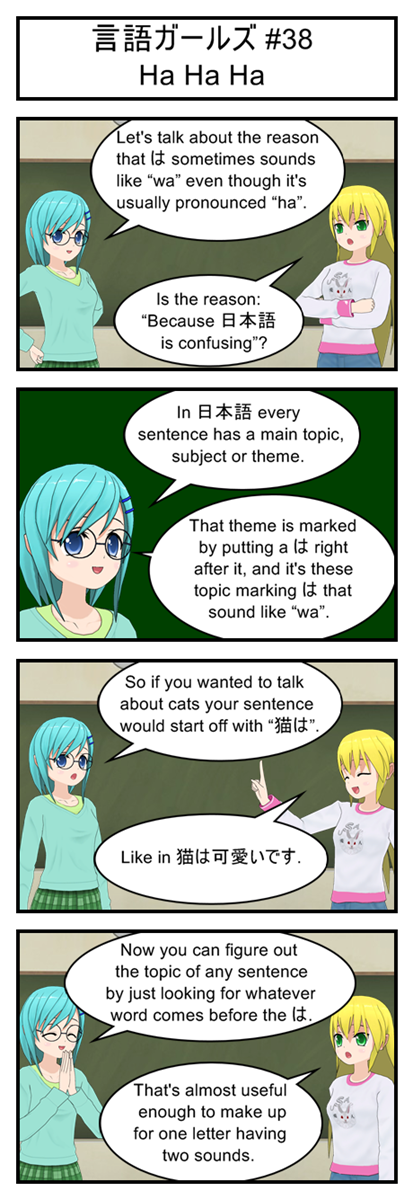
Japanese has a lot of spoken grammar markets. They use か to mark sentences as questions. They use は to mark topics. And they use things like が and を to mark various other important bits of information that we’ll talk about much later.
Which is good news for us because it can make analyzing complex sentences much simpler. Even in a sentence with dozens of adjectives and adverbs and prepositional phrases you can still depend on は to point you to the main subject. Most of the time…
Transcript
言語ガールズ #38
Ha Ha Ha
Blue: Let’s talk about the reason that は sometimes sounds like “wa” even though it’s usually pronounced “ha”.
Yellow: Is the reason: “Because 日本語 is confusing”?
Blue: In 日本語 every sentence has a main topic, subject or theme.
Blue: That theme is marked by putting a は right after it, and it’s these topic marking は that sound like “wa”.
Blue: So if you wanted to talk about cats your sentence would start off with “猫は”.
Yellow: Like in 猫は可愛いです.
Blue: Now you can figure out the topic of any sentence by just looking for whatever word comes before the は.
Yellow: That’s almost useful enough to make up for one letter having two sounds.